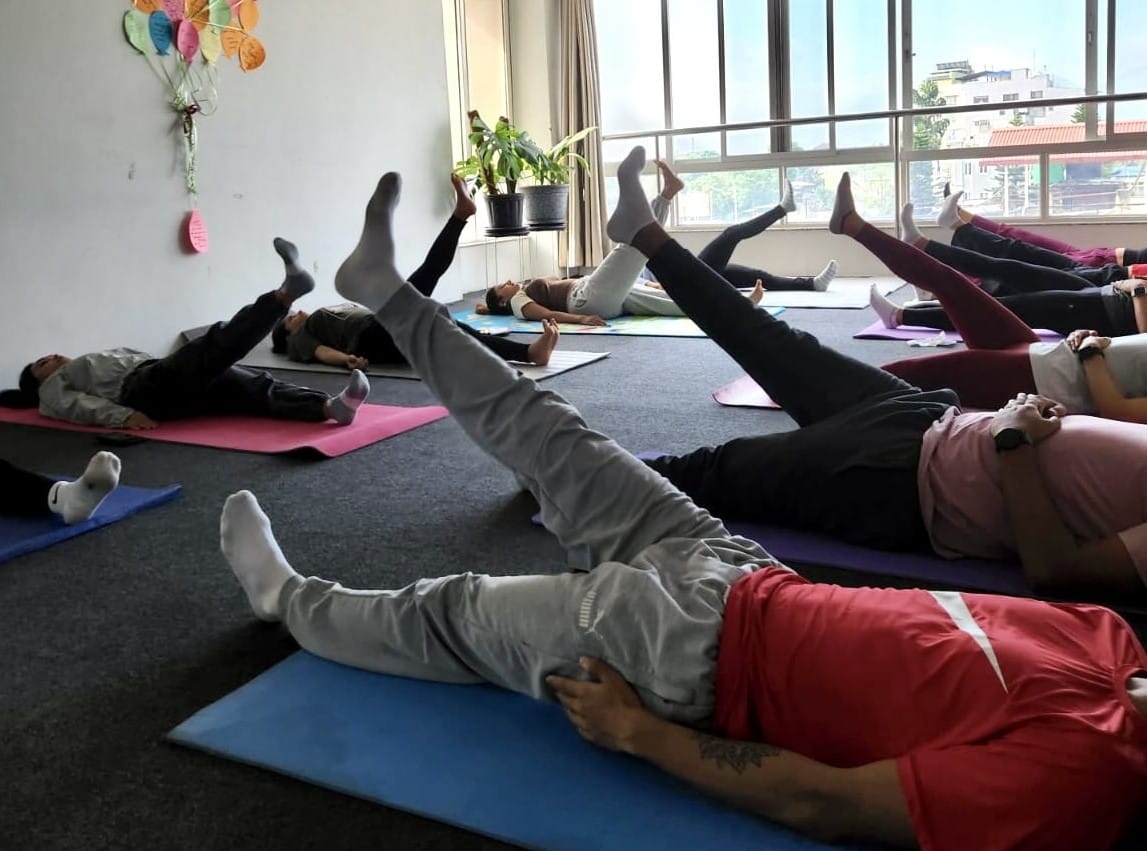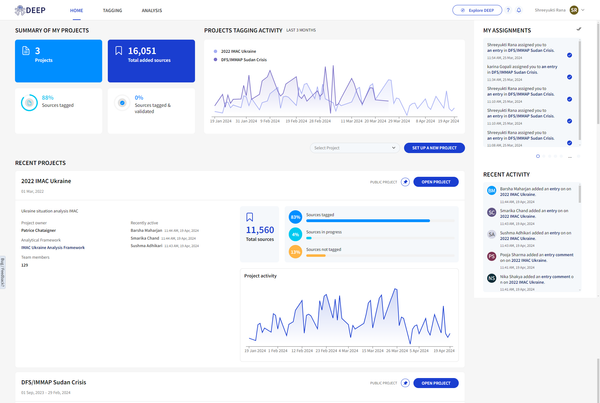The Ultimate Guide to stay active for a 9 to 5 worker: Importance of Physical Activity and Ways to Incorporate it

In today's sedentary work culture, many of us often find ourselves spending long hours sitting which can have detrimental consequences on our physical and mental health. A sedentary lifestyle, characterized by prolonged sitting and limited physical activity, has been associated with various health risks including a higher likelihood of developing chronic diseases such as obesity, cardiovascular disease, type 2 diabetes, and musculoskeletal problems (CDC, 2022). Moreover, lack of any kind of activity has been linked to poor mental health outcomes, including increased levels of stress, anxiety, and depression (CDC, 2022).
Engaging in regular physical activity can have a multitude of benefits, especially for people who find themselves in front of a desk for hours i.e. office workers. The World Health Organization (WHO) suggests that adults engage in at least 150 minutes of moderate-intensity aerobic exercise or 75 minutes of vigorous-intensity aerobic exercise per week (NCBI, 2020). By incorporating physical activity into the daily routine, studies have shown to lower rates of work-related musculoskeletal disorders (WMSDs) and occupational hazards, strengthen muscles and bones, enhance flexibility and posture, and manage weight (Matheus & Martinez, 2021). Engaging in any kind of exercise stimulates the release of endorphins, also known as "feel-good" hormones, aiding a lot in boosting energy levels and improving one’s mood (CDC, 2021). Furthermore, physical activity has been shown to improve cognitive function, including overall memory, attention, creativity, and productivity making it a valuable tool for any worker to enhance their performance and better problem-solving abilities in the workplace. It positively impacts mental health, reducing symptoms of stress, burnout, and anxiety and improving overall well-being (Thorsteinsson, 2015). It is crucial to incorporate regular physical activity into the workday daily routine to counteract the negative impact of prolonged sitting.
Incorporating Physical Activity into the Workday
Finding opportunities to incorporate physical activity into the workday can be challenging especially when your work requires you to sit in front of a screen for hours. However, with some creativity and planning, it is possible to establish a loop-hole routine that promotes regular movement and breaks from sedentary behaviour. Below are some strategies and options you can consider to incorporate into your day. This is the ultimate guide for you to make your 9 to 5 a bit less stagnant and a bit more active:
1. Take Frequent Breaks: One of the simplest ways to incorporate physical activity into the workday is by taking frequent breaks from sitting. You can set reminders to get up and move around every hour or so, even if it's just for a few minutes. Taking breaks from your screen relieves your eyes from the stress caused by focusing continuously at the screen. One can use this time to stretch your legs, walk around the office, or even just closing your eyes helps. A quick walk up and down the stairs will help increase the blood circulation.
To help you make said decision, applications such as BreakTimer and Stand Up emerge as valuable allies. These apps offer customizable break reminders tailored to your working hours, ensuring that you don't inadvertently overexert yourself. One prominent methodology that aligns with this approach is the Pomodoro technique, a widely acclaimed time management method, which asks you to alternate between work sessions and short breaks. It enables one to strike a harmonious balance between maintaining productivity and safeguarding wellbeing. It helps sustain concentration and stave off mental fatigue making it a win-win situation. There are Chrome extensions like Focus To-Do which helps to make this process more than an afterthought, ensuring its seamless incorporation.
2. Stand and Move While Working: Investing in a standing desk or adjustable desk or ergonomic chair can encourage movement and improve posture. It allows you to alternate between sitting and standing throughout the day, reducing the amount of time spent in a sedentary position. Standing while working can help improve posture, increase calorie expenditure, and reduce the risk of musculoskeletal issues. Additionally, one should make an effort to move around while performing tasks, such as pacing during phone calls or walking to a colleague's desk instead of sending an email.
3. Active Commuting: This might not be an option for everyone but considering alternative modes of transportation that require physical activity might be a great opportunity to incorporate some exercise before and after the workday. Walking or biking to work some days a week, if not daily can be considered. It is a great way to get in your steps or activity for the day without much thought. If commuting is necessary, consider getting off/on at a one-stop difference to give yourself a chance to move your body.
4. Desk Exercises and Stretches: Performing exercises and stretches at your desk every few hours can help alleviate the negative effects of prolonged sitting. Simple activities like shoulder rolls, body twists, wrist stretches, and leg raises can be done discreetly without additional equipment. Incorporating these exercises into your daily routine can improve posture, reduce muscle tension, and increase energy levels.
5. Encourage Workplace Wellness Programs: Advocate in creating a supportive culture that values and encourages physical activity. This could involve step challenges, encouraging employees to use stairs instead of elevators, providing access to walking trails or outdoor spaces, and longer lunchtime breaks to incorporate exercise classes or friendly sports tournaments. Or maybe through compressed workweeks, or remote work arrangements that could provide more opportunities for physical activity.
Even within our own company, this ethos resonates as many of us relish post-lunch walks to re energize, while others opt for activities like cricket and table tennis. Furthermore, team camaraderie is fostered through our company futsal team and hiking group, reflecting a commitment to a supportive and health-conscious work environment. Employers have a significant role to play in promoting workplace health and providing support and resources for employees to engage in regular physical activity. It is important to remember that a company that prioritizes work-life balance and active lifestyle for their employees also benefits the overall productivity and success of the organization.
Big companies like Samsung, Wayfair, SAP, Accenture Interactive and Sky are using apps like Peloton’s new Corporate Wellness program, which provides employees access to the Peloton app and exclusive benefits, endorsing team building along with healthy habits (Digiday, 2021). For a long time, Microsoft and Google have had the well-being of their employees as an utmost priority which we can see being reflected in their efforts with an all-encompassing wellness program featuring onsite healthcare services, including physician, chiropractic, physical therapy, and massage services, as well as access to fitness centers, classes. An American software company based in San Francisco, Asana Inc., even pays their employees to take naps in their “nap rooms” to help them recharge, and de-stress along with offering unlimited Paid-Time Off (PTO) to help employees achieve work-life balance (Monster).
Employee wellness activities like the above are not only available in big companies. Many small companies in the US like Stride and Bowery Farming have started incorporating this and encouraging an active lifestyle for their employees whether it be by providing access to free mental health services platforms or giving wellness stipends for quarterly “recharge weeks” (The Muse, 2023). A company gym has become a mainstay for many firms and companies, while elsewhere, subsidized health club memberships have become a familiar employee benefit which we can also see seeping into workplaces of Nepal as well with companies like Ncell with their Green Park and in-office gyms (myRepbulica, 2021).
Physical activity is not only essential for maintaining good health but also plays a vital role in the productivity and well-being of office workers including job satisfaction. Incorporating regular physical activity into the workday is essential for office workers to combat the negative effects of prolonged sitting. By implementing strategies such as active commuting, taking regular breaks, engaging in desk exercises, using active furniture, and promoting workplace wellness programs, one can enhance their overall quality of life. Remember, staying active 9 to 5 is not only beneficial for physical health but also contributes to increased productivity, improved mood, and overall job satisfaction. By following some of the above-mentioned tips and implementing the strategies outlined, one can stay active 9 to 5, and reap the benefits of a more active work environment.




